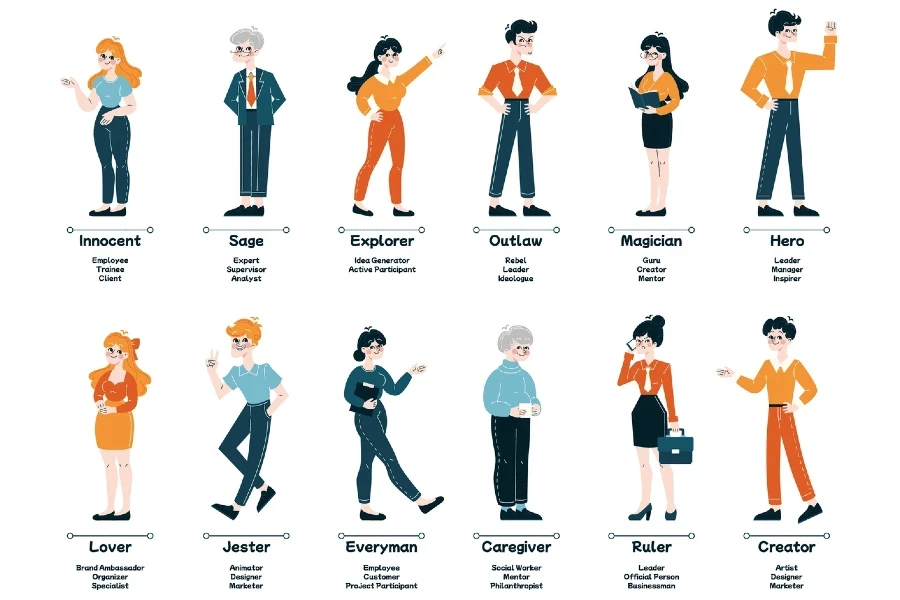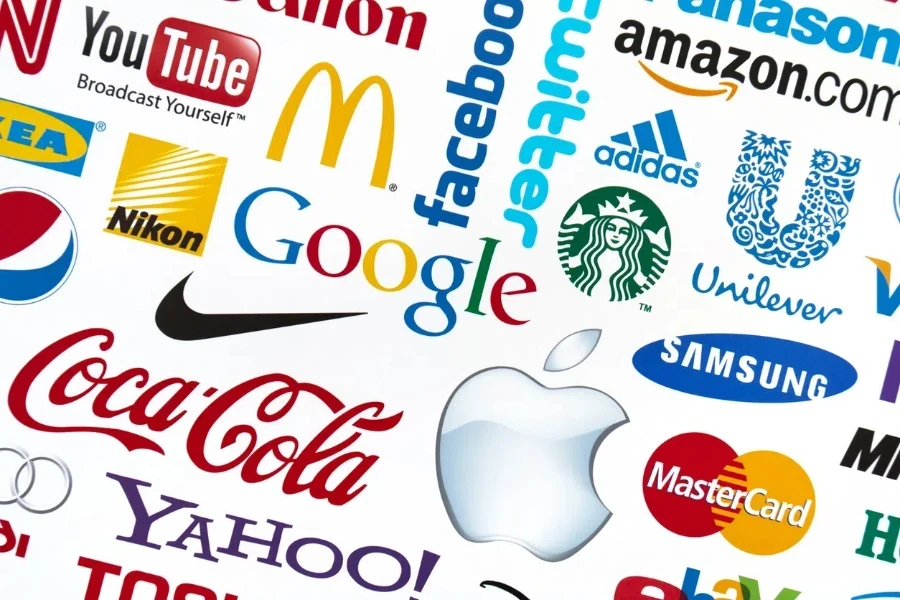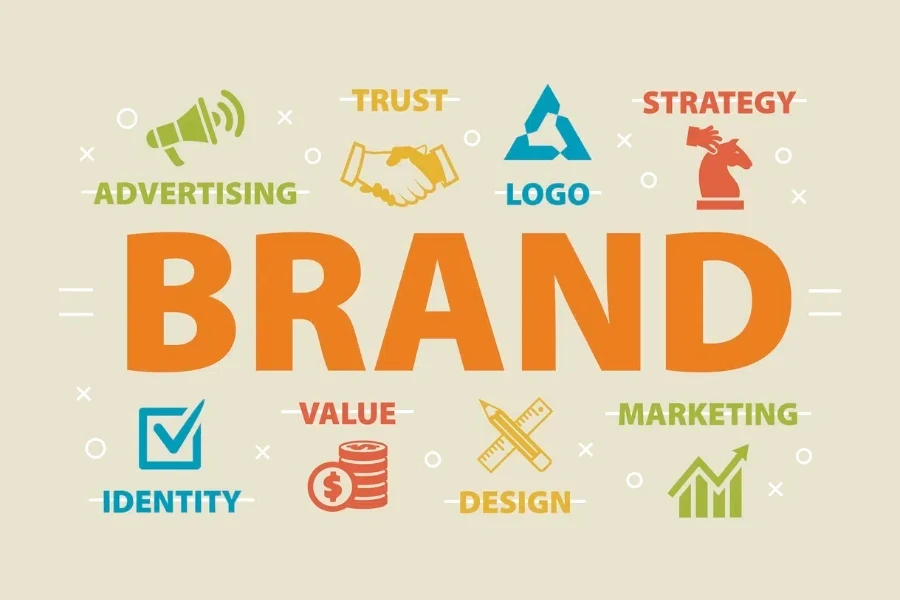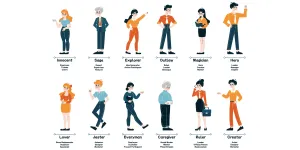Sometimes, what makes you buy the same product over and over again isn’t the quality. There’s something special about some brands, and that’s why we find ourselves connected to them.
It’s no secret that these brands have unique personalities, but in general, most of them fall under one of the 12 brand archetypes.
Table of Contents
What are brand archetypes?
The 12 brand archetypes and their strategies
The bottom line
What are brand archetypes?
A successful brand is a brand that your target audience can resonate with. This will not happen just because you have a great product or an attractive design; it takes time and effort to create a business with a personality and mission.
Brand archetypes can save you some time and effort because they enable you to determine the character traits and beliefs that reflect your brand.
These archetypes represent the universal identities most brands are composed of. Once you identify the right archetype for you, it will be easier to convey consistent and harmonious brand elements across all of your marketing and communication channels.
The 12 brand archetypes and their strategies
As we previously explained, a brand is similar to a human being. That’s why we can associate each brand archetype to a human desire. With that in mind, it’s normal to use the concept of archetypes from psychology to help us build strong and relatable brands and determine the right strategy for each brand.

1. The outlaw (or the rebel)
This outlaw brand archetype is all about breaking the rules and challenging the status quo. It’s the most fearless and attention-grabbing archetype, which enables the brand to have a unique positioning even in saturated niches and markets.
An outlaw brand tends to resonate the most with customers who are looking to add that fearless and adventurous feeling to their lifestyle. Those people value freedom, independence, and innovation, and this makes them the ideal target audience for an outlaw brand.
- Desire: Liberation
- Strategy: Disrupting the industry, doing things differently, and crafting bold messages
- Example: Diesel, Harley-Davidson, and Tesla
2. The creator
The creator brand archetype comes to the market with an inspiring vision and creates the whole business around it. It aims at creating something meaningful with an impact and long-lasting value. Creativity, imagination, and inspiration are the essence of the creator brand archetype.
It’s easy to think this archetype is similar to the outlaw archetype because both of them try to innovate and create something new and unique, but there is a huge difference. The creator brand archetype is innovative and visionary, but not rebellious, unlike the outlaw brand, which is rebellious and bold.
- Desire: Innovation
- Strategy: Fixing pain points in a creative way, inspiring others to be their authentic selves, and creating outside-the-box content
- Example: Apple, Crayola, and Lego
3. The sage
The sage brand archetype is rooted in the pursuit of knowledge, wisdom, and thought leadership. It comes to the market to educate, guide, and share solutions and expertise.
This brand archetype doesn’t act from a desire to change things and doesn’t necessarily have a revolutionary vision to change the world. Instead, it prefers to empower and push people to change their lives by acting as a thought leader, providing valuable information, and sharing its expertise. It also has a sense of leaving a legacy and timeless wisdom that people can always benefit from.
- Desire: Understanding
- Strategy: Creating ever-green and timeless educational content consistently, sharing your opinionated and thought-leader side, and leveraging facts and stories to encourage people to take action
- Example: TED, Google, and PBS
4. The caregiver
The caregiver brand archetype is all about being of service. It’s compassionate and driven to serve and help others, and this makes it the ideal archetype for sectors such as charity and healthcare.
A caregiver brand comes to the market with a meaningful mission that revolves around helping people, especially on a humanitarian and social level. Safety, compassion, and care are the core values of this archetype, and this makes it more likely to focus on those who the market considers less worthy of effort and focus.
- Desire: Service
- Strategy: Doing things for others, serving the public, focusing more on helping and giving instead of acting like a regular business
- Example: Campbell’s Soup, Johnson & Johnson, and UNICEF
5. The innocent
The innocent brand archetype infuses wholesomeness and promotes an idealistic view of the world. It comes to the market with a simple and optimistic vision where everyone is happy and everything is perfect.
Brands with the innocent archetype aim to create a sense of hope and safety in their audience even if it’s considered unrealistic or hard to achieve in their industry. That’s why they usually choose to be positioned as leaders in bringing positive change into the world.
- Desire: Safety
- Strategy: Crafting uplifting and optimistic messages, doing the right thing even if it’s hard or unpopular, sticking to values and morality
- Example: Dove, McDonald’s, and Coca-Cola

6. The jester
The jester brand archetype wants people to laugh and enjoy themselves. The jester comes to the market with a playful and fun attitude and tries to create a lighthearted and memorable experience for their customers.
The last thing the jester archetype wants to create is boring experiences and content; that’s why it believes strongly in the saying, “If you’re not having fun, you’re doing it wrong” and uses it to evaluate its products and content.
- Desire: Enjoyment
- Strategy: Crafting fun and witty messages, prioritizing fun and enjoyable customer experience above all else, engaging with customers in a fun and creative way
- Example: Old Spice, Paddy Power, and Skittles
7. The magician
The magician brand archetype is all about transformation, thinking big, and making dreams come true. It aims to create something special that surprises and amazes the audience.
People can build a deep connection with a magician brand because of how they feel when they interact with it. This is what makes this archetype powerful and able to attract people to become a part of the mission effortlessly.
- Desire: Power
- Strategy: Building hype about products and services, promoting personal and professional transformation, and crafting messages that challenge obstacles (and reality) and encourage people to reach their full potential
- Example: Disney, MAC Cosmetics, and Polaroid
8. The ruler
The ruler brand archetype represents the classical industry leader. It aims at maintaining a stable and powerful position in its market even in difficult times and chaos and works on providing high-value and reliable products.
Expertise, stability, and confidence are non-negotiable values for a ruler brand. This is why people who value status, quality, exclusivity, and luxury are the ideal audience for this archetype.
- Desire: Control
- Strategy: Adopting a formal way of marketing and communication, having high standards in everything they do from production to sales, and acting as an industry leader instead of having a vision to become one
- Example: Microsoft, Rolex, and Mercedes-Benz
9. The hero
The hero brand archetype is all about bravery, mastery, and taking on difficult tasks. It aims at making a difference and overcoming problems, and it also focuses on promoting its path of courage and self-actualization.
This archetype resonates the most with ambitious, determined, and strong-willed individuals who see themselves as capable and worthy of heroic transformation.
- Desire: Mastery
- Strategy: Focusing on storytelling, sharing challenges and obstacles, not just success moments or product launches, and promoting a “winning” mindset through content and products
- Example: Nike, BMW, and Adidas

10. The everyman (or regular guy)
The everyman brand archetype is considered the people’s brand. It promotes a sense of community, equality, and human connection.
Everyman brands adopt a friendly attitude and present themselves as approachable and inclusive. That’s why they can attract a wide range of people from different backgrounds and demographics. They’re also simple, generalized, and aim to be liked by all.
- Desire: Belonging
- Strategy: Focusing on being relevant to many people instead of standing out, prioritizing the goal of building a community with content and marketing campaigns, and avoiding extremity and being too opinionated
- Example: Ikea, Ford, and Levi’s
11. The explorer
The explorer brand archetype is characterized by an intense desire for freedom and adventure. It comes to the market with an invitation to break free from the routine and go to explore the world fearlessly.
This archetype can look similar to the outlaw archetype, but the explorer doesn’t promote disruption nor try to change the rules. It’s all about going on a continuous journey of discovery.
- Desire: Freedom
- Strategy: Telling compelling stories, crafting simple messages that promote discovery and adventures, and highlighting new experiences and even new angles of relevant topics in the industry
- Example: Jeep, REI, and Subaru
12. The lover
The lover brand archetype is associated with deep connection and romanticizing the world. The lover brands are often empathetic and sensual, and are also driven to make people build an emotional bond with their products and services.
This archetype resonates the most with individuals who are affectionate and have a passion for beautiful and luxurious items.
- Desire: Intimacy
- Strategy: Sharing emotional stories and moments, creating content that shows passion and focuses on details, and providing a memorable customer experience on all levels (product, packaging, colors, etc.)
- Example: Victoria’s Secret, Alfa Romeo, and Chanel

The bottom line
Reviewing brand archetypes and choosing the most aligned one to apply to your business is important to building a strong brand. Those archetypes are meant to guide you and not limit you; you can have the same archetype as other brands and have a unique brand personality at the same time.




